Edouard Manet was born in Paris on January 23, 1832. His father was a reputable judge and his mother was of royal ancestry. They were well-off. Manet knew from a young age he wanted to be an artist and he had an uncle who encouraged him. His father had other aspirations but when Manet failed exams to get into the Navy his father supported Manet’s artistic ambition and art education. In 1845 Edouard Manet took his first drawing class.
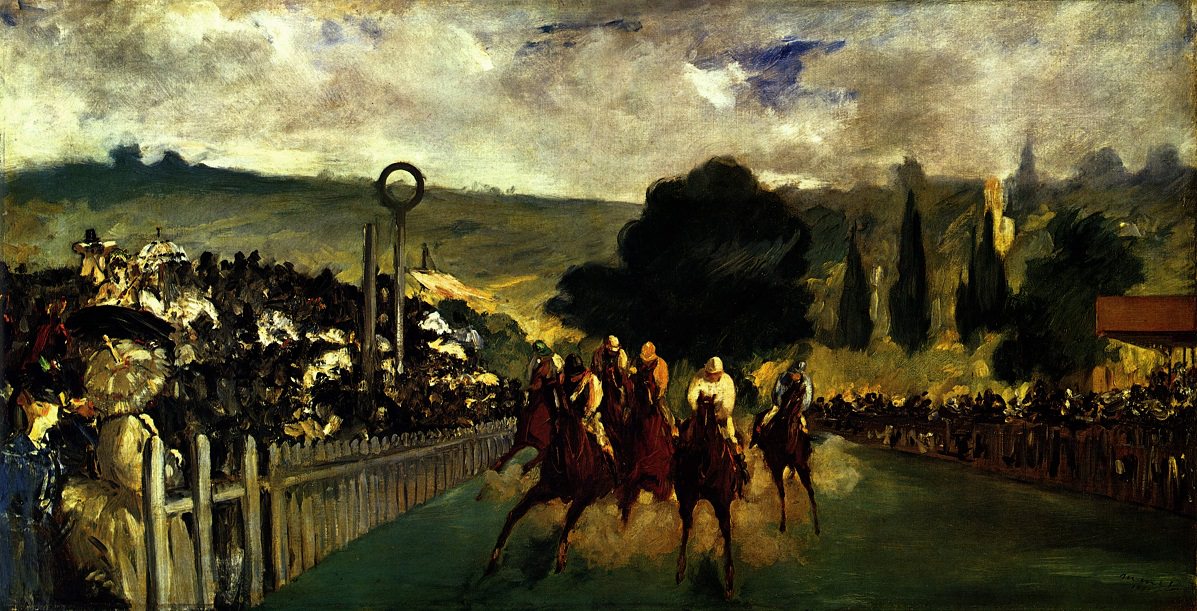
“The Races at Longchamp” was painted in 1866. This painting is wonderfully startling. The blurred background creates
the explosive charge of the racehorses and we viewers are front and center of the onrush galloping horses. It is clear the bustle of the spectators and the excitement of the race are foremost to make your heart pound at this approach. It wasn’t a style popular at the time and is delivered to us with an elegant irony.
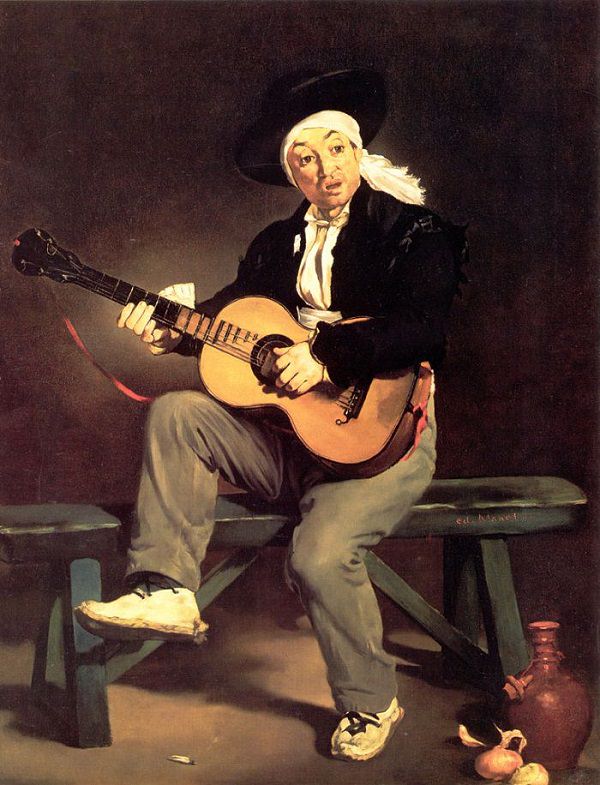
“The Spanish Singer” was painted in 1860. At that time Manet was not well known. Other artists flocked to his studio and a huge mistake was pointed out by an art critic. The singer is right-handed the guitar strung for a left handed player. Secondly Manet did not paint the usual and normal vibrant colors into this painting. It bothered the critics. Like most masterful artists Manet decided when the painting was finished. On one occasion his reply to that criticism was “"I looked at it in my little black mirror... it was all right. I never added another stroke." Manet did not put any credence in the artistic opinions of others. It was his unwavering faith in his abilities and his determination to perfect his craft that made Edouard Manet one of the most renowned artists throughout history.
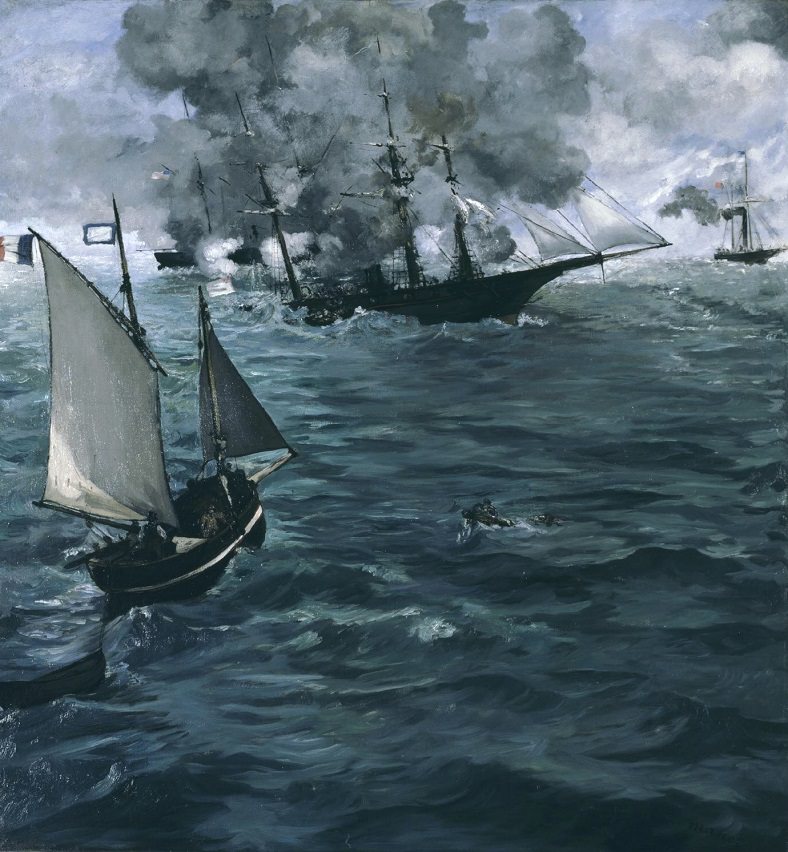 “Alabama and Kearsarge” was painted in 1864. It is difficult to do an entire painting in greens and blues effectively. And yet here we see exactly that. This is one of the works that received the highest praise during Manet’s lifetime. The painting records an incident in the Civil War. On June 19, 1864 off Cherbourg the Kearsarge, a US Navy corvette attacked and sank the Alabama, a Southern privateer. Manet was an eyewitness to the battle and quickly portrayed the event. The water is masterful and we see turmoil in the sky, the movement of the water, the smoke and the clouds. This is a realistic life event of his time.
“Alabama and Kearsarge” was painted in 1864. It is difficult to do an entire painting in greens and blues effectively. And yet here we see exactly that. This is one of the works that received the highest praise during Manet’s lifetime. The painting records an incident in the Civil War. On June 19, 1864 off Cherbourg the Kearsarge, a US Navy corvette attacked and sank the Alabama, a Southern privateer. Manet was an eyewitness to the battle and quickly portrayed the event. The water is masterful and we see turmoil in the sky, the movement of the water, the smoke and the clouds. This is a realistic life event of his time.
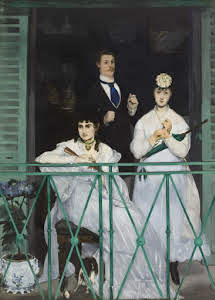 Manet painted “The Balcony in 1868.” The painting was panned because it was contrary to the styles at the time. Manet was freeing himself from the academic constraints of the age. He also used Berthe Morriset for the first time as his model. She would appear as his model in several of his paintings. At the time it was popular to depict the activities of the elite in art. But we don’t see that here. The colors are strategically placed, the green of the balustrade and shutters, the blue of the man’s tie as well as the contrast between the 2 white dresses and the darkness of the background were perceived as provocation. The painting does not tell a story. Manet’s close friends are just hanging out. It is art for art’s sake.
Manet painted “The Balcony in 1868.” The painting was panned because it was contrary to the styles at the time. Manet was freeing himself from the academic constraints of the age. He also used Berthe Morriset for the first time as his model. She would appear as his model in several of his paintings. At the time it was popular to depict the activities of the elite in art. But we don’t see that here. The colors are strategically placed, the green of the balustrade and shutters, the blue of the man’s tie as well as the contrast between the 2 white dresses and the darkness of the background were perceived as provocation. The painting does not tell a story. Manet’s close friends are just hanging out. It is art for art’s sake.
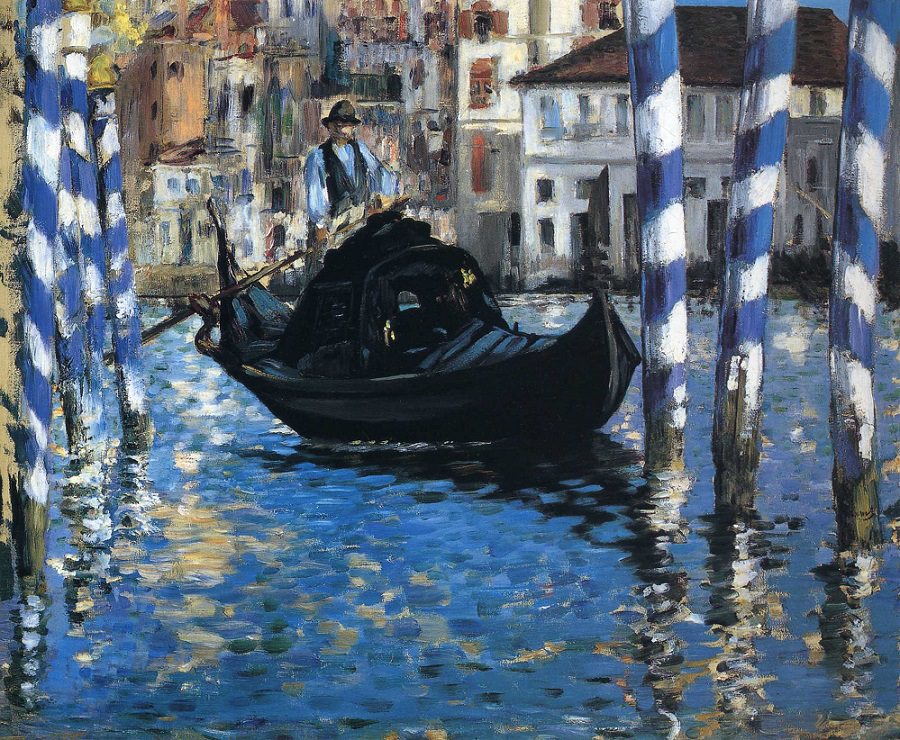
“The Grand Canal of Venice” was painted in 1875 when Manet visited with an artist friend. This painting of water has a very different feel than the North Atlantic seascapes. Manet had painted with Claude Monet and other impressionist artists during that summer. We see the broken brushstrokes and more vivid colors to create this master work. Mary Cassatt commented “he was thoroughly discouraged and depressed at his inability to paint anything to satisfaction”. He created a delightful and unique experiment with this painting.
Setting oneself apart from the norm requires determination and the ability to focus. Edouard Manet had both of these important qualities. He studied many artists and he certainly produced some of the most beautiful and impressive works of art. While he was an influence to the impressionists he wanted to set himself apart even from that art style. He wanted to depict a normal day in the life of his friends in a real and artistic way. His work is considered “early modern” partially because of the black outline around his figures which does draw attention to the surface of the of the picture plane and the material quality of paint. His paintings create the quiet verve of normal people in normal activities.
I think what I like most is his fierce independence and belief in himself. He did exactly what he wanted to do in a way he wanted to do it. His style was individual and unique and his art is truly magnificent.
Until next time!
Christine Adams
artbycadams.com

